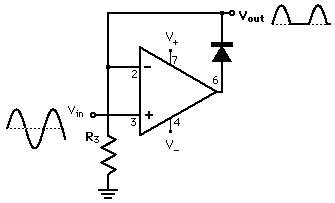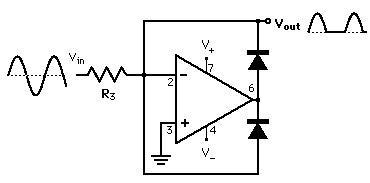| This can be considered to be a non-inverting amplifier with a diode in the feedback path. When the input goes negative, the output of the op-amp goes to the negative supply so that no current flows and the
output is
clamped to zero.
When the signal goes positive the diode conducts to obey the current rule and the output tracks the input.
Note that this is an example where the voltage rule is broken on the non-conducting half cycle. The gain is very high because of the reversed diode, but it can only drive the op-amp to the negative supply and cannot make the inputs equal in voltage.
| 


